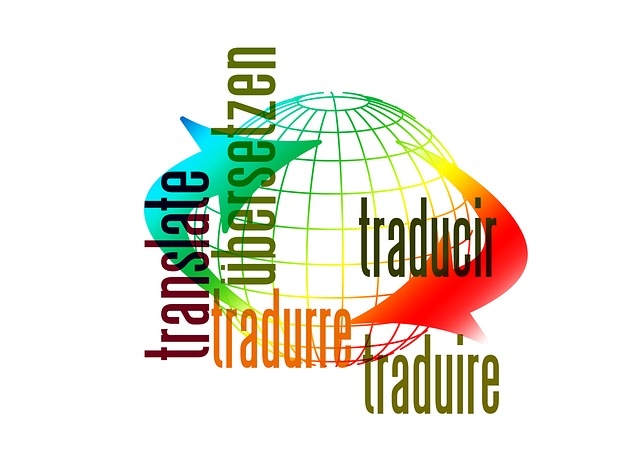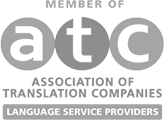In the fast changing, dynamic multilingual world, transcription services are a necessity in business. In various industries, the demand for reliable and quality transcription services is at an all-time high. With an array of services catering to different languages and sectors, transcription plays an instrumental role in facilitating effective communication, ensuring accessibility, and fostering understanding. But what goes into ensuring quality audio and video transcriptions? Let’s embark on a journey to uncover the intricacies of transcription services.
Short Summary
- Transcription services enable multilingual communication, accessibility and understanding of audio and video files.
- Professional transcription services offer three distinct types of transcription: verbatim, intelligent, and edited.
- Time coding, data security & subtitling/captioning are key considerations when selecting a provider.
Understanding Transcription Services

Transcription is the art of transforming spoken language in audio or video formats into written text, a process that is crucial to many areas of modern life. From facilitating communication in multilingual environments to ensuring accessibility for differently-abled individuals, transcription services are invaluable, especially in diverse and bustling Singapore.
The versatility of transcription services singapore is truly remarkable. From transcribing meetings and legal proceedings to transcribing for research or focus group discussions, these services cater to various industries, ensuring that no word goes unheard. Moreover, with support for English, Malay, Tamil, Mandarin, Cantonese, and over 120 other languages, transcription services in Singapore truly cater to the city’s multicultural landscape.
Video Transcription
In the realm of video content, ensuring accessibility is paramount. This is where video transcription comes into play, transforming spoken language in video files into written text, which can then be used for subtitling, captioning, or simply making content more accessible.
However, transcription isn’t the only tool at our disposal when it comes to amplifying the reach of video content. Subtitling, captions and captioning are also key players in this arena. While captions cater to viewers who are unable to hear the audio, subtitles are designed for those who can hear the audio but may not comprehend the language. By incorporating these elements, we can ensure our video content is accessible to a wider audience, potentially increasing its reach and impact.
Audio Transcription
Just as video transcription makes video content accessible, audio transcription does the same for audio and video files. It involves converting spoken words in audio files into written text, a process that is commonly utilized in industries such as the media, legal, business, medical, and media.
When it comes to translating a transcribed document, transcription service providers usually have specialist translators with credentials and expertise in every field and sector. However being translated, it is crucial for project managers to state their translation services needs upfront to ensure a smooth and efficient transcript of process.
An experienced transcriber typically requires 7-8 times the duration of the file to transcribe it, so plan your project and delivery timeline accordingly.
General Types of Transcription Services

Beyond the basic understanding of transcription, it’s also enlightening to delve into the three primary types of transcription: verbatim, intelligent, and edited transcription. Each type has its own purpose and level of detail, and the choice largely depends on the specific requirements of your transcription project.
Verbatim transcription is the most detailed type and format of transcription, capturing every word, pause, and phrase.
Verbatim Transcription
If you’ve ever been involved in legal proceedings, you’ll understand the gravity of listening to every spoken word. In such scenarios, verbatim transcription comes to the fore, recording every single word and sound uttered in an an audio file or video recording, including pauses, stutters, and other noises.
Verbatim transcription doesn’t just capture every word, it also captures the essence of the spoken language. This level of detail is invaluable for content related to legal and court matters, where every spoken word may be of utmost importance to a legal case, especially when dealing multiple languages with the same language. By converting the spoken language into a written form, verbatim speech transcription ensures accuracy and precision.
Intelligent Transcription
While verbatim transcription is all about capturing every detail, intelligent transcription takes a slightly different approach. It focuses on the context and meaning of the spoken language, providing a more reader-friendly output by omitting unnecessary elements.
Non-verbatim transcriptionists employ their judgment to accurately capture the meaning of the words, make necessary grammatical corrections, omit irrelevant words or sounds, and paraphrase accordingly. This type of transcription is commonly utilized for corporate meetings, scholarly conferences, and virtual news.
Edited Transcription
Just as an editor enhances the readability of a written document, edited transcription refines the transcribed text for clarity and accuracy. It focuses on providing high-quality documents by eliminating stammers and repetitions, amending grammar, editing and excluding or editing some sentences for readability and lucidity.
Edited transcription is essential to ensure that the transcribed text is precise and comprehensible, making it suitable for articles, research materials, and presentations. This level of refinement is crucial, especially when the transcripts are intended for publication or presentation.
Domain Specific Transcription Services of Audio and Video Files

While the general types of transcription services cater to a wide range of needs, there are instances where specialized knowledge is required. This is where domain-specific transcription services come into play. Enhancing the accuracy of transcription for specialized content that is not usually heard in general speech, these services provide a valuable resource for those who need to accurately transcribe audio or video recordings.
Legal Transcription Services

In the legal realm, where every word carries significant weight, legal transcription services prove to be indispensable. These services handle the transcription of audio or video recordings related to legal proceedings, such as court hearings, depositions, and other legal documentation.
Accuracy is paramount in legal transcription services. Professionals and court reporting agencies often rely on these services to ensure that every spoken word is accurately transcribed, as even the slightest errors can have serious implications.
Medical Transcription Services
Medical transcription services hold a critical role in the healthcare sector. They involve converting dictated voice reports from physicians and other healthcare professionals into text file format, ensuring the accurate and reliable documentation of medical records and patient reports.
Given the nature of the content, these services require an understanding of medical terminology and a strict observance of privacy regulations. Consequently, it’s crucial to choose a transcription service provider that prioritizes accuracy, confidentiality, and adherence to industry standards.
Academic and Research Transcription
In the world of academia and research, transcription services play a significant role. They facilitate the transcription of audio recordings and video recordings related to:
- lectures
- seminars
- interviews
- other academic events
This ensures that valuable professional knowledge is accurately documented and easily accessible.
The importance of accuracy and quality in academic and research transcription cannot be overstated. Accurate transcripts are often utilized for research purposes and must be precise. Furthermore, the transcriptions need to be legible and comprehensible, making them a valuable resource for students, researchers, and educators alike.
Other Considerations for Transcription Services

While accuracy, turnaround time, and expertise are crucial considerations in transcription services, there are other factors to consider as well. Some important aspects to consider include:
- Time-coding
- Confidentiality
- Data security
- Enhancing accessibility through video transcription, subtitling, and captioning
These factors can greatly enhance the quality and usefulness of transcription services.
Benefits of Time-coding in Transcription
Time-coding in transcription is a technique that involves assigning timestamps to audio or video recordings. This not only facilitates synchronization between the transcript of file and the source audio file, but also aids in enhancing accuracy and making referencing and translation easier.
The benefits of time-coding are particularly significant in the case of legal and research transcriptions, where precise alignment of the text in an audio file can greatly facilitate easy referencing and verification. Furthermore, it simplifies the translation process by providing an exact timestamp for each word or phrase in the various transcriptions.
Confidentiality and Data Security

When it comes to transcription services, confidentiality and data security are not just important, they’re indispensable. The sensitive nature of some transcriptions, such as legal and medical documents and interviews, necessitates stringent measures to safeguard this information from unauthorized access or use, including the use of non-disclosure agreements.
Selecting a transcription service provider with secure processes guarantees clients that confidential business information is safeguarded throughout the transcription process. This safeguards not just the integrity of the data, but also the reputation of the businesses and individuals involved.
Enhancing Accessibility with Video Transcription, Subtitling, and Captioning
In an increasingly digital world, enhancing accessibility is a crucial consideration. Video transcription, subtitling, and captioning are powerful tools that can be employed to make content more inclusive and easier to comprehend for a wider audience.
While video transcription converts the audio of a video into text, subtitles and captioning involve adding text to the text format or video itself. This not only makes the content accessible to those who are unable to hear the audio, but it also aids in comprehension for those who may not understand the language of the audio.
Choosing the Right Transcription Service Provider
Choosing the right transcription service provider is a critical step in ensuring the success of your transcription project. Factors to consider include:
- Accuracy
- Turnaround time
- Pricing
- Language support
- Industry expertise
For instance, Translated Right is known for delivering quality audio and video transcriptions with high accuracy and timeliness. Additionally, the importance of information security, especially for legal teams, law firms, insurance firms, and Fortune 500 clients, cannot be overstated, making it an essential consideration when selecting a transcription service provider.
Summary
In conclusion, quality transcription services are a fundamental part of many industries, from legal and medical to academic and research. With a wide array of types and specializations, transcription services facilitate effective communication, enhance accessibility, and ensure the accurate documentation of spoken language. Whether it’s verbatim, intelligent, or edited by experienced transcriptionists, a reliable service provider can cater to your unique needs, ensuring that every word is heard and understood. As we navigate an increasingly global and digital world, let’s not forget the power of the spoken word, and the importance of making it accessible to all.








